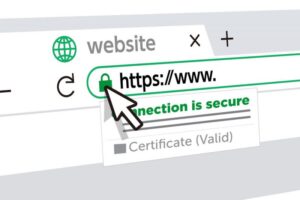In the world of website development, WordPress shines as a versatile platform that allows you to create a professional website, an e-commerce platform, or manage website maintenance efficiently. One of the key elements that makes WordPress so appealing is the ability to customize your website’s theme. In this blog post, we’ll explore the best practices for WordPress theme customization, helping you make your website truly unique and tailored to your specific needs. If you have any questions or need expert guidance on theme customization, don’t hesitate to contact me at email: afhamzahid5@gmail.com or Phone: +92 315-3212271.
Table of Contents
Why Customize Your WordPress Theme
- Brand Identity: Customizing your theme allows you to reflect your brand’s identity through unique colors, fonts, and design elements.
- User Experience: Tailoring your theme enhances the user experience, making your website more intuitive and engaging for visitors.
- Differentiation: With countless websites out there, customization sets your site apart from the competition and makes it memorable.
- Functionality: Theme customization gives you control over your website’s features and functions, enabling you to add or remove elements as needed.
- Responsive Design: Customization ensures that your website is responsive and looks great on all devices, from desktops to mobile phones.
Best Practices for WordPress Theme Customization
- Backup Your Website: Before making any customizations, always create a full backup of your website. This ensures that you can revert to the previous version in case anything goes wrong during customization.
- Child Themes: Instead of customizing the parent theme directly, create a child theme. This preserves the original theme’s integrity and makes updating your theme in the future easier.
- Use a Visual Customizer: WordPress offers a visual customizer that allows you to change colors, fonts, and other style elements without delving into code. It’s user-friendly and ideal for beginners.
- Custom CSS: For more advanced customizations, you can add custom CSS to override or enhance the theme’s styles. Use a custom CSS plugin or the built-in customizer for this purpose.
- Widgets and Sidebars: Customize the layout of your website by adding, removing, or reordering widgets in your sidebars or footer areas.
- Plugins: Leverage plugins to enhance your website’s functionality. Whether you need SEO, contact forms, or e-commerce capabilities, there’s a plugin for it.
- Optimize for Performance: Ensure that your customizations do not slow down your site. Compress images, optimize code, and regularly test your website’s speed.
- Test Across Devices: Always test your customizations on various devices and browsers to ensure a consistent and responsive design.
- SEO Optimization: Customize your theme to be SEO-friendly. Use SEO plugins and optimize meta tags, headings, and content for search engines.
- User-Friendly Navigation: Ensure that your website’s navigation is user-friendly and intuitive. Customize menus to make it easy for visitors to find what they’re looking for.
Conclusion
Customizing your WordPress theme is a powerful way to make your website stand out in the crowd. Whether you manage a professional website, an e-commerce platform, or require website maintenance, following these best practices for theme customization can help you achieve a website that aligns with your brand, offers an excellent user experience, and functions seamlessly.
If you have questions about WordPress theme customization or need expert guidance on creating a unique and personalized website, please feel free to contact me at email: afhamzahid5@gmail.com or Phone: +92 315-3212271. I’m here to assist you in making your website an online masterpiece that reflects your vision and goals.




